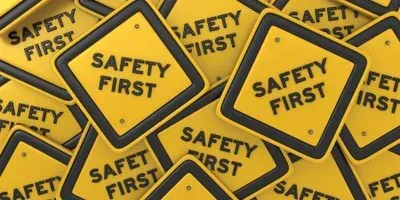Lab safety is a vital concern for all lab managers. Keeping our staff healthy and safe through the different activities in the lab is the number one priority for most lab managers. Many lab safety programs are based primarily on compliance—this is compliance to government regulations, company policies, and local lab practices. Compliance brings many benefits to the safety culture of the lab. One way to improve a safety culture is to add risk-based protocols to the compliance safety culture. Utilizing risk management and thinking about staff protection through the lens of risk also brings many benefits.
Thinking about risk relative to the activities practiced in the lab isn’t that difficult. Many lab scientists already think about risk when planning and executing their experiments. As the lab manager, you can build on the individual efforts to institute risk-based safety thinking for the whole lab. Here are three tips that will help you:
#1 – Conversations about risk
Gathering people together to discuss the risks inherent in the lab activity is really valuable. These discussions enable the sharing of knowledge across the team and help newer members of the lab to learn about the risks. One effective tool to guide these conversations is doing “what-ifs.” Imagine something going wrong in the experiment; for example, what if the power went out unexpectedly, or the cooling water failed, or someone knocked over the solvent bottle. What would happen? How can we prevent the incident? How can we reduce the severity of a problem?
#2 – Rating risk
Most lab risks aren’t really linear. They could grow quickly and move from an inconvenience to an incident. One effective risk rating tool is to estimate both the probability of a bad outcome, and the severity of an incident, on a one to five scale, and then multiply the factors to compare the risk, from one to 25. Ensure that your team explicitly addresses those outcomes that generate high products of the probability and the severity.
#3 – Ask for help
Ask for a review from someone outside the local team. Having an outsider review the safety protocols injects new experience and brings new eyes to the practices. The new eyes can uncover blind spots or reveal bad habits. One of the issues for the local team is becoming blind to some of the hazards in the lab just because they’ve handled them successfully for a long time. This can lead to underestimating the risk and opening the possibility of a dangerous incident.
Thanks for reading. I hope you can use this information. I am very interested in hearing from you. If you have feedback or comments on this set of tips, or suggestions for future Manager Minutes, I’d love to hear from you. Please reach out to me at shanton@labmanager.com. I’m looking forward to our conversations. Thanks.












